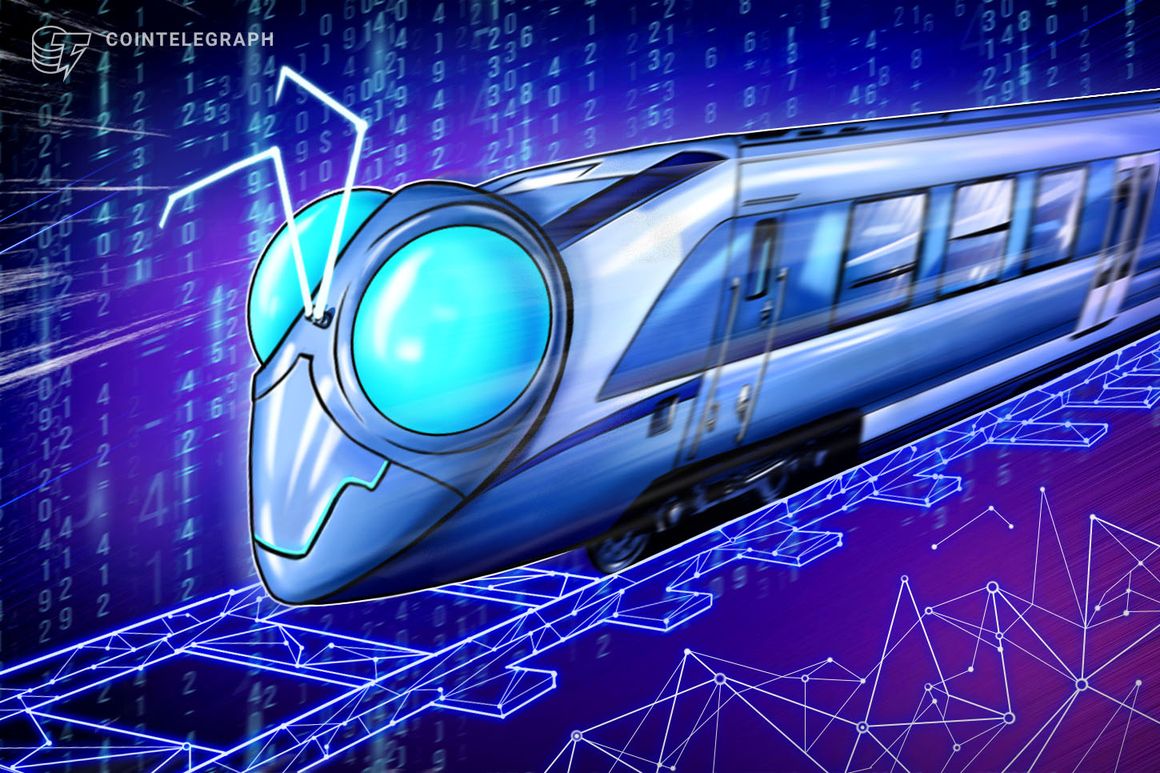
Cosmos-native layer-1 blockchain Canto has become the latest chain to migrate to Ethereum as a layer 2 zero-knowledge rollup, after another layer-1 blockchain, Astar, announced similar plans moving from the Polkadot ecosystem to Ethereum.
Canto is a permissionless general-purpose blockchain, which is Ethereum Virtual Machine (EVM)-compatible with aims to onboard the traditional financial sector to decentralized finance applications.
Upon an official agreement reached by Canto Commons — a framework where contributors coordinate ideas and solutions to the protocol — its core developers will build a ZK rollup on Ethereum’s second layer, Polygon Labs explained on Sept. 18:
“By leveraging a shared ZK bridge, Canto will eventually tap the liquidity of a unified Polygon ecosystem with easy access to Ethereum.”
Polygon Labs said Canto will “inherit” Ethereum’s security, enabling more decentralization and trustless guarantees when bridging assets over:
“User security comes by way of a best-in-class and in-production ZK prover, meaning community security is ensured by cryptography and inherited from Ethereum, rather than the social-economic incentives of fraud proofs.”
Neofinance at scale – Canto is migrating to a ZK-powered Ethereum L2, built with @0xPolygon CDK.
The @CantoPublic community will tap Ethereum’s deep liquidity via a shared ZK bridge without sacrificing user security – a big stride toward neofinance.https://t.co/8uDhLYk1G9
— Polygon (Labs) (@0xPolygonLabs) September 18, 2023
There will be no changes to Canto’s validators or staking system, Polygon Labs added.
Canto follows moves from Astar
Canto joins the likes of Astar, Gnosis Pay, Palm and IDEX to have announced plans to build ZK layer 2s using Polygon’s Chain Development Kit in recent months, according to Polygon Labs co-founder Sandeep Nailwal.
On Sept. 13, the Astar team announced it will soon begin building its own Ethereum layer-2 scaling solution, named Astar ZK-Ethereum Virtual Machine (EVM), also using Polygon’s CDK.
“We are building a trustless bridge to Ethereum with high EVM equivalency right out-of-the-box, so dApp developers can use existing tools to build solutions across our entire ecosystem,” the Astar team explained in a Sept. 14 statement.
I’m excited to welcome @AstarNetwork, the leading @Polkadot chain to Ethereum. They are going to launch a zkEVM chain using @0xPolygon CDK, an Ethereum L2 secured by ZK!@AstarNetwork is the leading blockchain of Japan. After launch, it quickly became among the most notable… pic.twitter.com/0SgYE6ENet
— Sandeep Nailwal | sandeep. polygon (@sandeepnailwal) September 13, 2023
Polygon Labs hopes the ZK-powered chain will enable businesses to implement Web3 solutions with increased speed, scalability, and security in Japan — where Astar is based — and around the world.
Ryan Sean Adams, co-host of Ethereum show Bankless said the two most recent migrations to Ethereum could be the start of a rollup avalanche.
The largest chain from polkadot just moved to Ethereum. (Astar)
The largest public commons chain from Cosmos just became a Polygon Validium. (Canto)
And…I hear the world’s first Solana Virtual Machine (SVM) L2 is dropping tomorrow.
Ethereum rollups are eating the world.
— RYAN SΞAN ADAMS – rsa.eth (@RyanSAdams) September 18, 2023
Not every protocol is sticking around on Ethereum
Meanwhile, some protocols appear to moving the other way.
Decentralized exchange dYdX announced its intention to build a “purely decentralized” order book exchange on Cosmos as part of a plan to migrate away from Ethereum in early September.
Another Ethereum-native protocol, Maker, signaled plans to move to cut ties with Ethereum and build a new, more “efficient” chain with Solana’s codebase in September too.
Related: Idealistic Ethereum community-built zkEVM Scroll launching in weeks
Maker’s co-founder Rune Chistensen added Solana currently stands as the “most promising” ecosystem to explore as it proved its resilience during the FTX debacle and has a high-quality pool of talent developers building on Solana.
The last phase of Endgame is the launch of a native blockchain for Maker with the codename NewChain
It will make the ecosystem more secure and efficient
After some research, I believe the Solana codebase should be considered as the basis for NewChainhttps://t.co/KyGxBBGlVH
— Rune (@RuneKek) September 1, 2023
Nonfungible token collection OnChainMonkey is also shifting its entire collection of 10,000 NFTs from Ethereum to Bitcoin. The team behind the protocol cited a more secure base layer and a thriving Bitcoin Ordinals ecosystem as the main reason behind the migration plan.
Magazine: DeFi Dad, Hall of Flame: Ethereum is ‘woefully undervalued’ but growing more powerful



